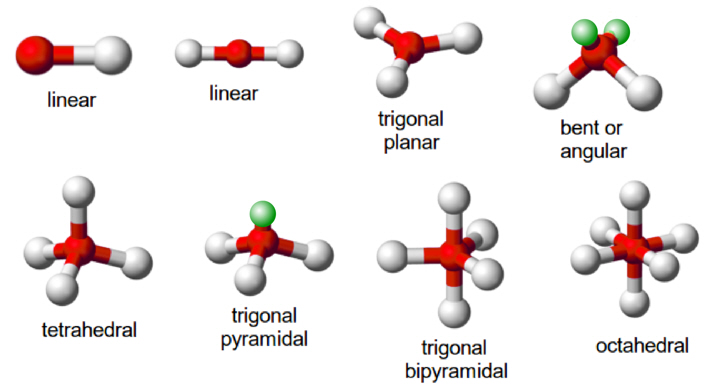Chemical Bonding and Shape of Molecules


↪ There are molecules and ions for which drawing a single Lewis structure is not possible.
For example, we can write two structures of O3.
↪ In (A) the oxygen-oxygen bond on the left is a double bond and the oxygen-oxygen bond on the right is a single bond.
↪ In B the situation is just the opposite. The experiment shows, however, that the two bonds are identical.
↪ Therefore neither structure A nor B can be correct.
↪ One of the bonding pairs in ozone is spread over the region of all three atoms rather than localized on a particular oxygen-oxygen bond.
↪ This delocalized bonding is a type of chemical bonding in which bonding pair of electrons are spread over a number of atoms rather than localized between two.
↪ Structures (A) and (B) are called resonating or canonical structures and (C) is the resonance hybrid.
↪ So, in many compounds and ions (e.g., O3, C6H6, CO2, NO etc.), a single valence bond structure cannot explain all the properties of the molecule or ion.
↪ Bonding in such compounds/ions can be explained by the concept of resonance.
↪ The phenomenon in which a molecule or ion cannot be represented by a single structure rather it should be represented by more than one structures to explain its properties, is called resonance.
↪ More than one such structures of the same molecule or ion are called resonating structures.
↪ None of these structures correctly represent the actual structure of molecule or ion.
↪ The real structure of the molecule or ion, is hybrid of these structures, called Resonance hybrid.
↪ The resonating structures are formed due to the delocalization of π-bond or lone pair of electrons or odd electrons.
Some other examples

· Benzene


The difference in the energies of the canonical forms and resonance hybrid is called resonance stabilization energy.
Characteristics of Resonance
↪ Canonical forms have no real existence. Only resonance hybrid has the real existence.
↪ Resonance hybrid has lower energy than any contributing structure. So it is more stable.
↪ Greater is the number of canonical forms with nearly same energy, greater is the stability of the species.
↪ Greater the resonance energy, greater is the stability of the molecules.